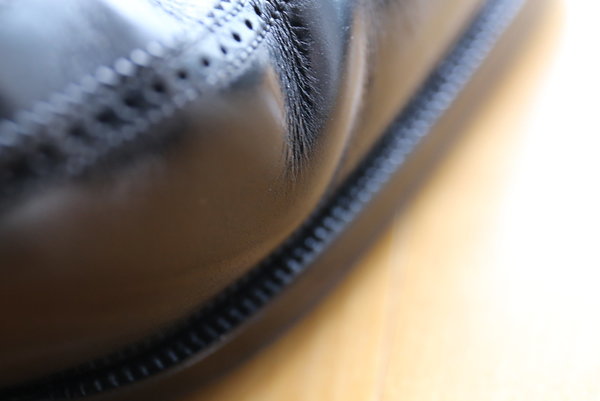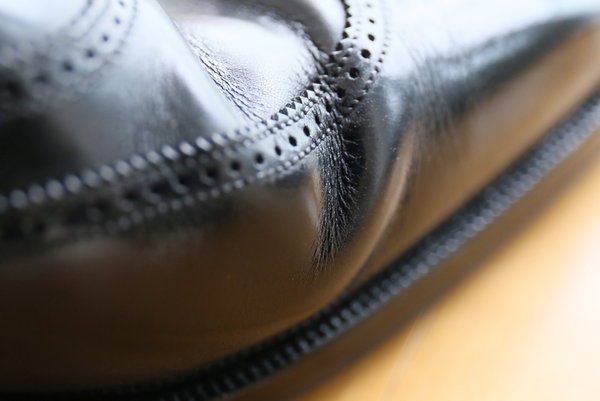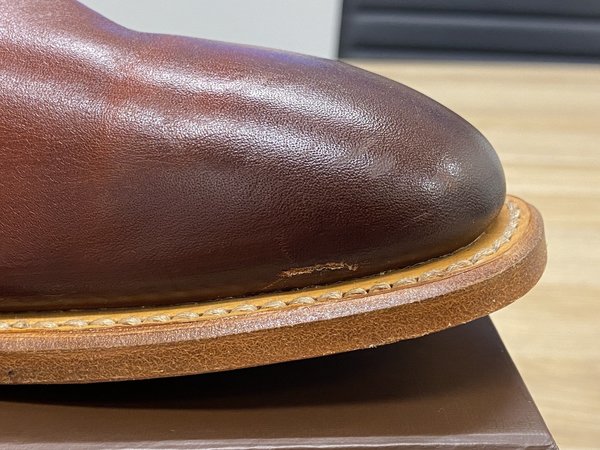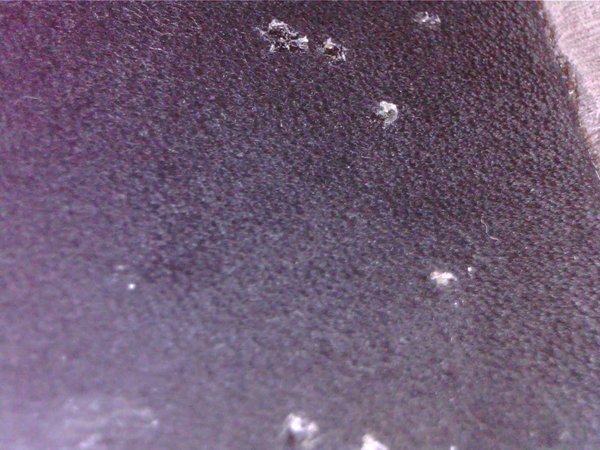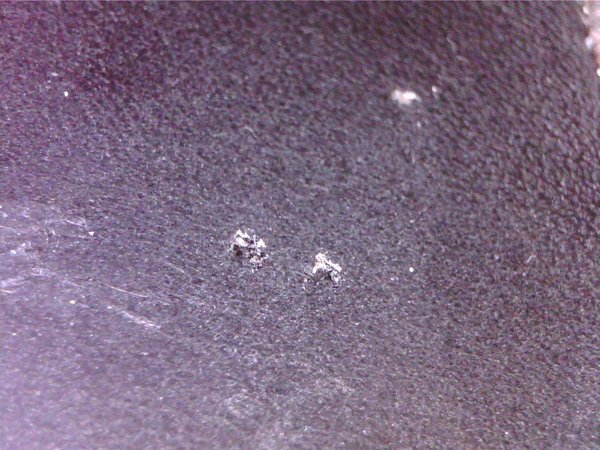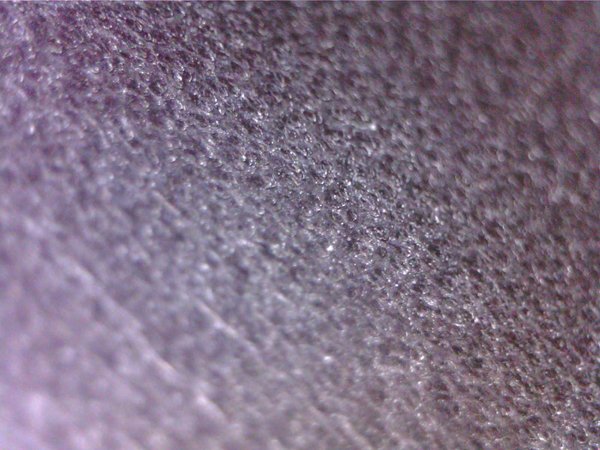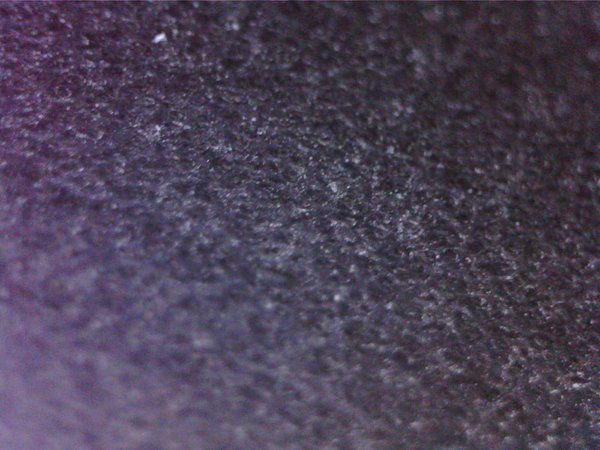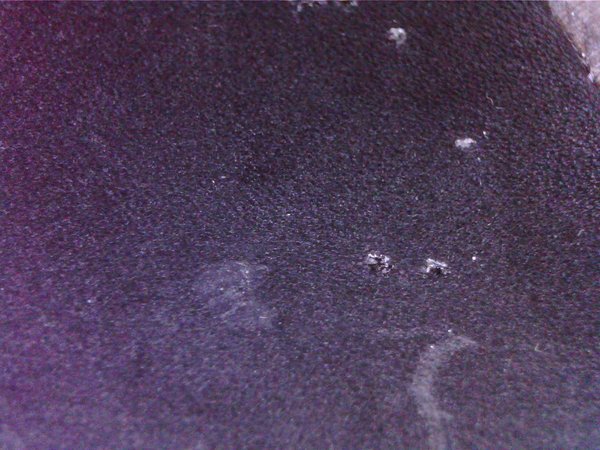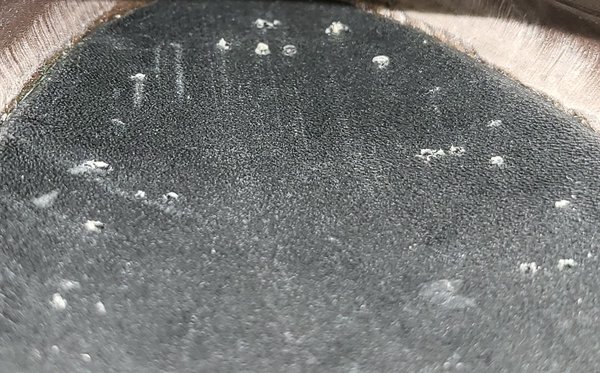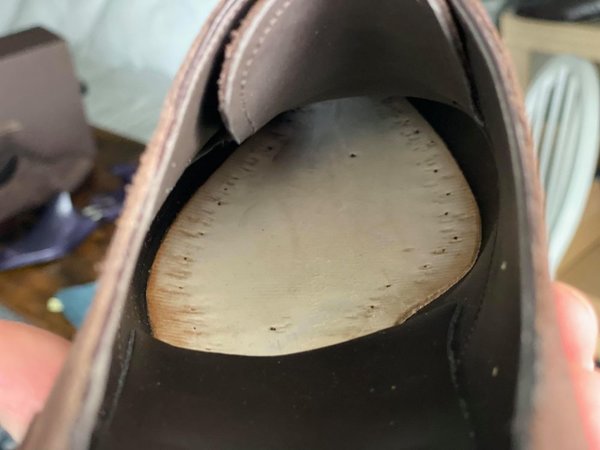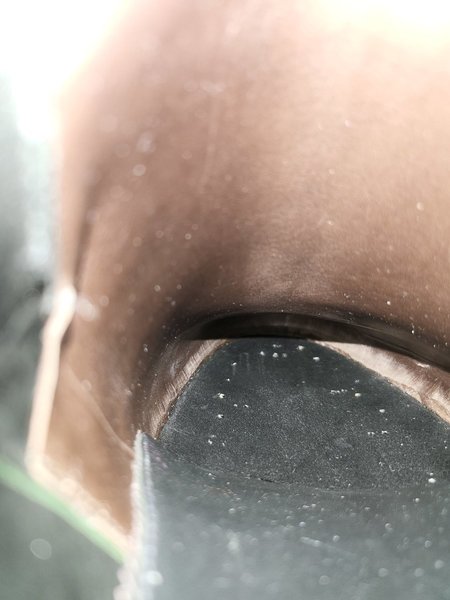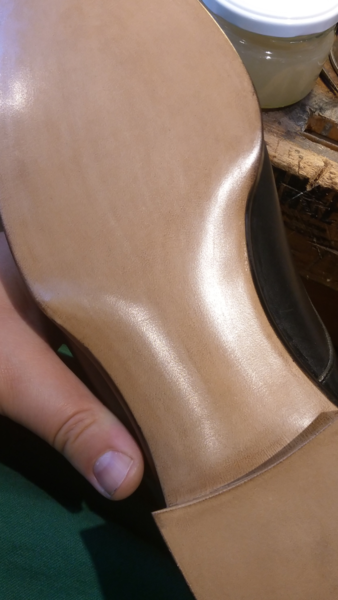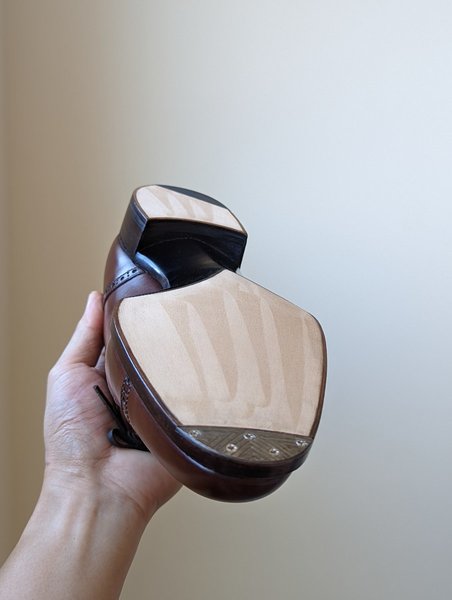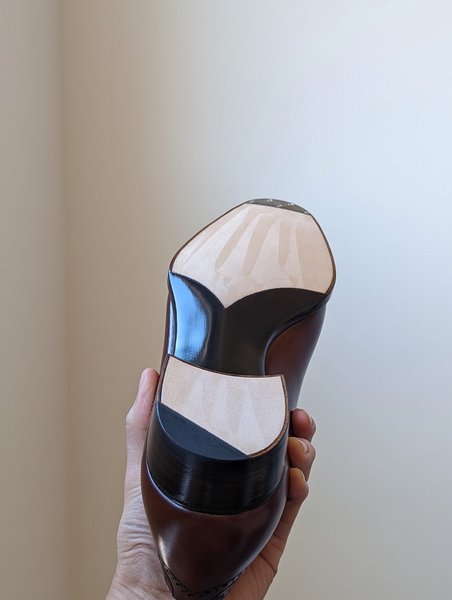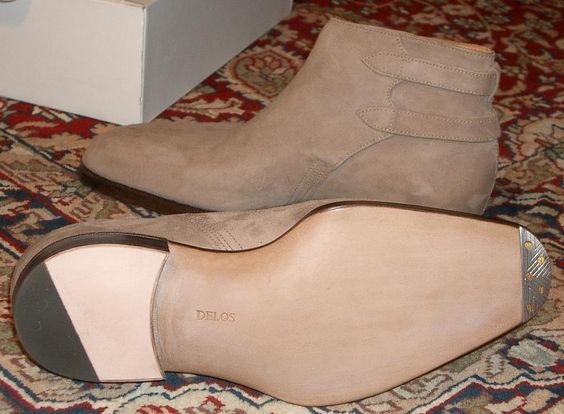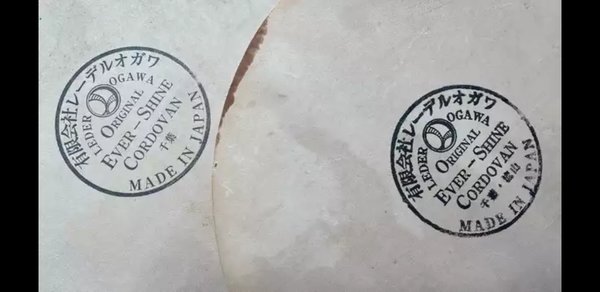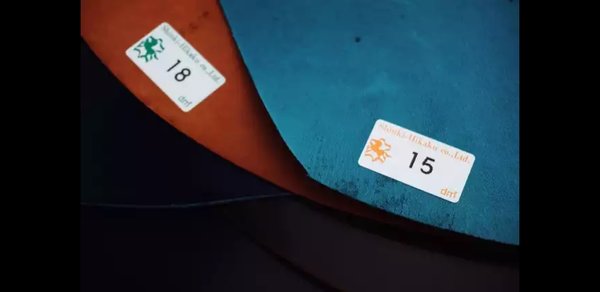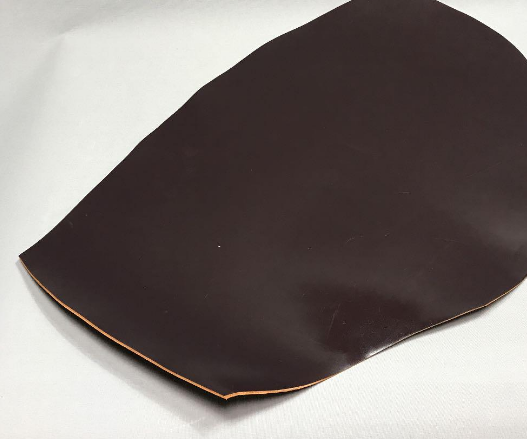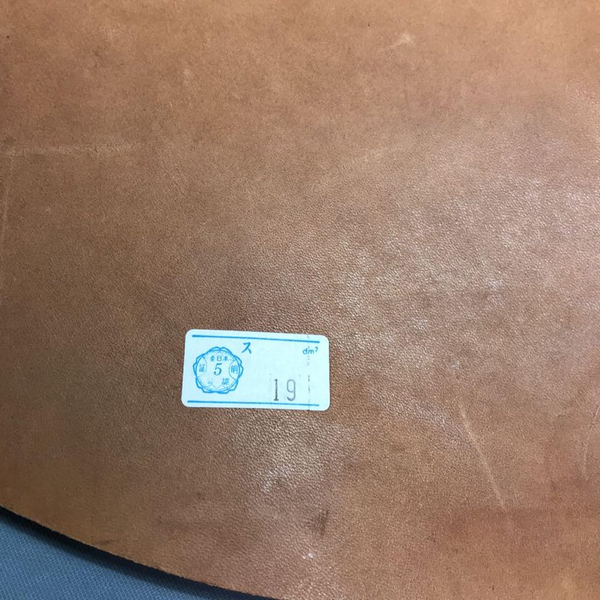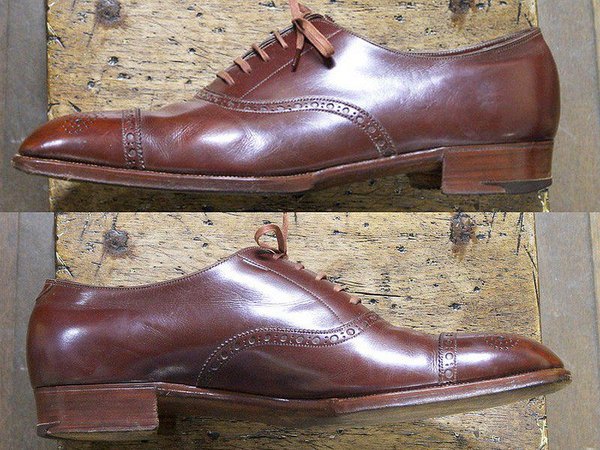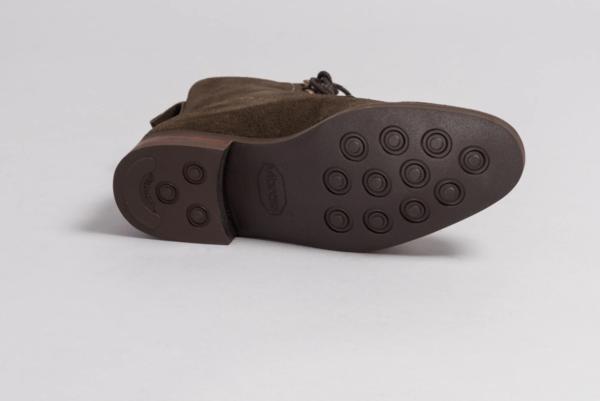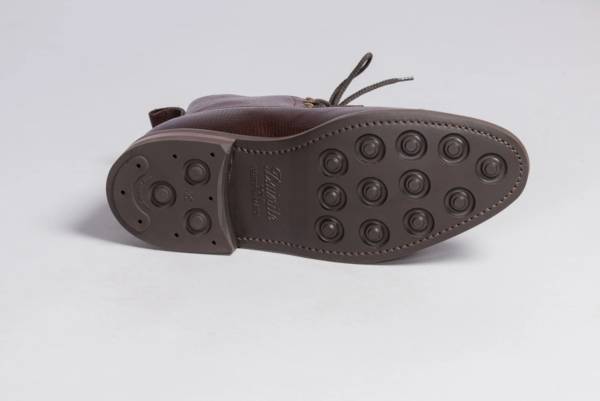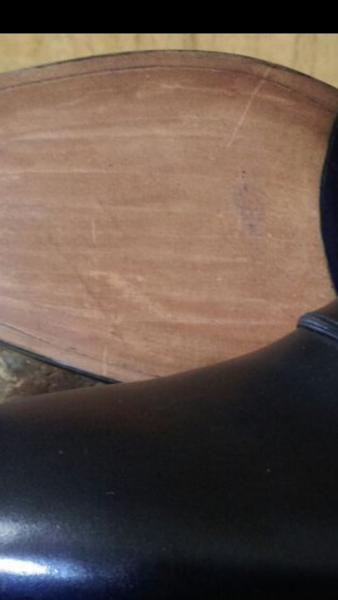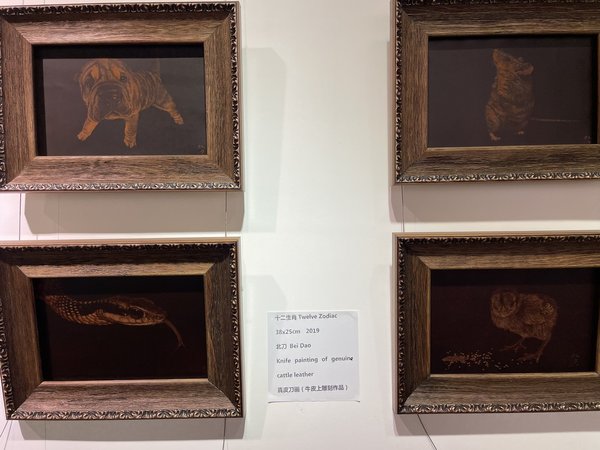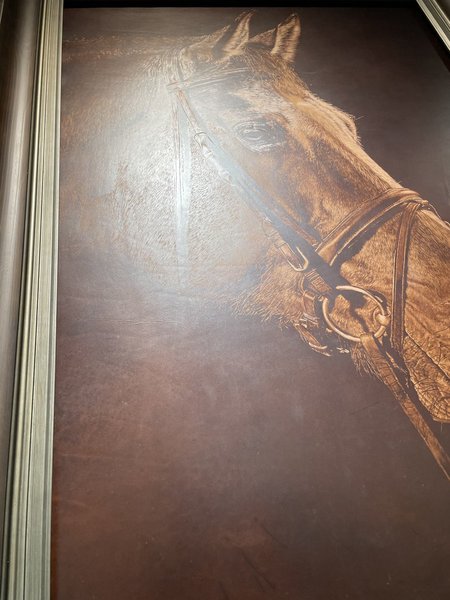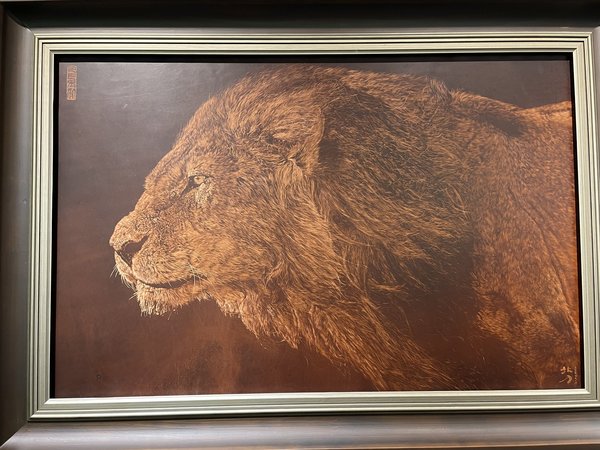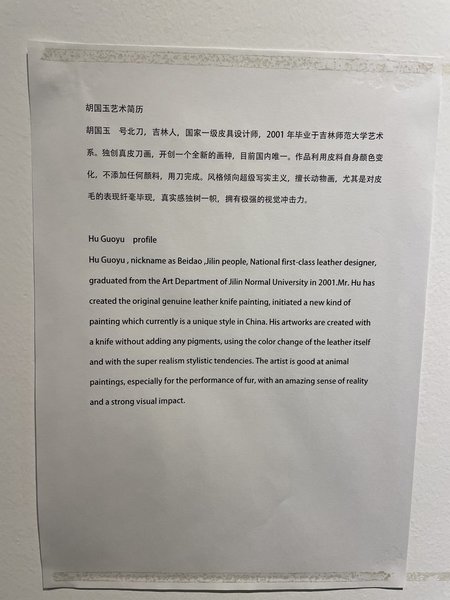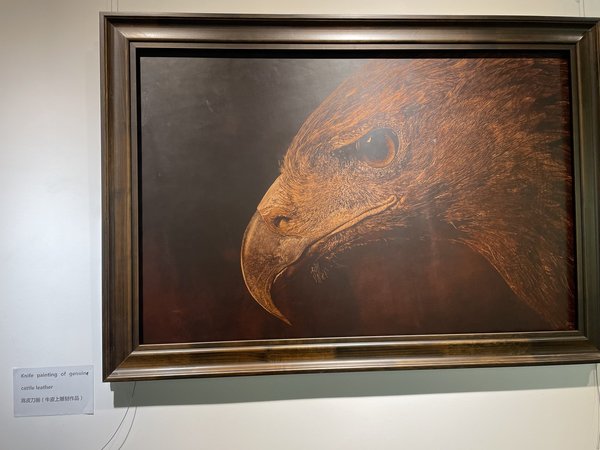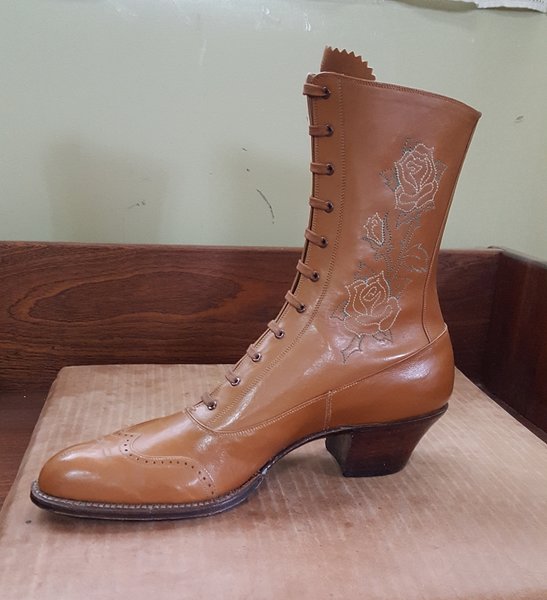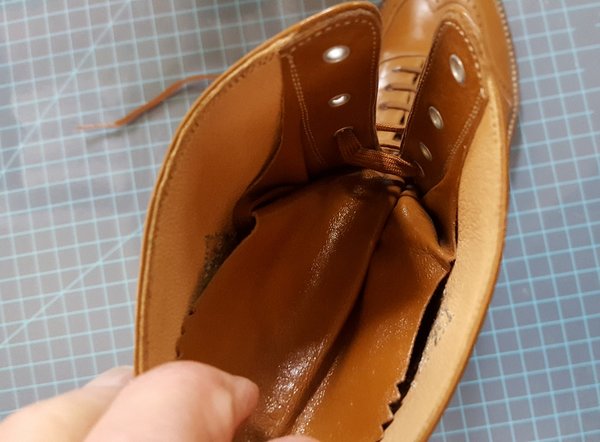- Joined
- Jan 8, 2008
- Messages
- 10,132
- Reaction score
- 5,714
A little of both I would say. The welt does compress but to some extent the leather moves sideways, as well. The increased tension is simply the result of the prick pushing the thread deeper into the hole. But the increased tension is mostly just cosmetic, the overall tightness of the stitch is not affected.
No, the stitches on the bottom of the insole are in a channel. Literally...or all but...invisible. And in any case, the outsole is so much denser and firmer, pricking wouldn't do much--all by way of trying to convey a sense of the temper of the welt.
What accounts for the increase in stitch tension? Does the welt not compress but rather "flow" so that the center of the stitch is higher than it would have been had it not been pricked?
Also, do you do this on the bottom stitching on the outsole?
A little of both I would say. The welt does compress but to some extent the leather moves sideways, as well. The increased tension is simply the result of the prick pushing the thread deeper into the hole. But the increased tension is mostly just cosmetic, the overall tightness of the stitch is not affected.
No, the stitches on the bottom of the insole are in a channel. Literally...or all but...invisible. And in any case, the outsole is so much denser and firmer, pricking wouldn't do much--all by way of trying to convey a sense of the temper of the welt.









![Fing02[1] :fonz: :fonz:](/styleforum_ads/smilies/fing02[1].gif)

